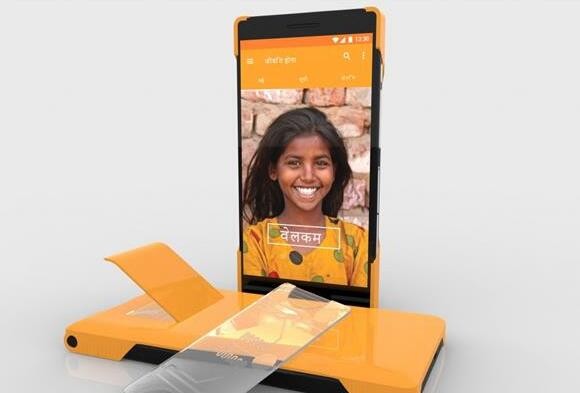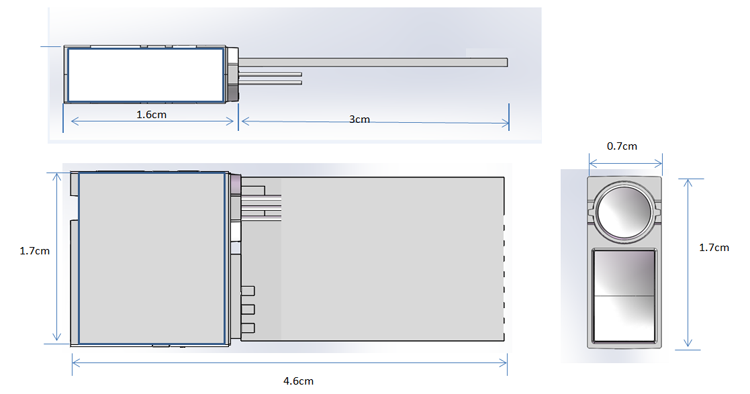3D printed smartphone case Vasu for rapid diagnosis of malaria

Design competitions are always a great opportunity for the most innovative concepts or ideas to emerge. The Luxexcel Innovation Application Award, established by Luxexcel, the Dutch optical 3D printing company, is no exception. As one of the winners of the competition, Leroy Huikeshoven, an industrial design student from India, brought us the Vasu malaria test device, which is actually a special 3D printed smartphone case, which also uses microfluidic control. The principle is combined with an app to diagnose malaria in the patient's blood.
Vasu is a bright meaning in Hindi. In India, it is increasingly difficult to fight back malaria because malaria parasites have developed resistance to commonly used drugs. More importantly, the diagnosis of the condition is quite old and often takes several days to get results. And some relatively convenient pocket tests, but can not detect what parasite species caused the disease. These problems are often difficult to solve due to some practical obstacles, even if some studies show that if you invest in malaria control in India, every rupee will often bring about an economic dividend of nearly 20 rupees.
Vasu has the potential to solve these problems because it was designed specifically for India. Its first 3D printed prototype can be used on the Huawei Ascend P6 smartphone and combined with the microfluidic principle, it is cheap and easy to use. According to Huikshoven, this clever system can quickly quantify the amount of malaria parasites in patients for easy and accurate treatment.
So how does it work? By examining samples collected on 3D printed disposable chips, Vasu has the ability to diagnose two forms of malaria parasites (P. vivax and Plasmodium falciparum) in patients. Using the microfluidic principle, blood is mixed with an antigen and placed in a chip for analysis. Through an App, the flash on the smartphone will then illuminate the blood and immediately analyze the acquired image. The doctor can use this to determine the exact amount of drug needed to destroy the parasite, and the entire process takes only a few minutes.
This makes it a truly revolutionary product, all you need is a smartphone, and the rest is done in 3D printing. This makes it very suitable for the realities of developing countries, knowing that in today's world, smartphones are everywhere, and the performance of their built-in cameras has been constantly improving, which makes it an excellent one. Diagnostic tools. In fact, the same idea can be used for the diagnosis of other blood diseases.
It is understood that the Vasu device was awarded the Luxexcel Innovative Application Student Award in 2015, and this is part of the Huishoven Bachelor Program. Although he does not have a professional background in medical product design, he explains that he was inspired by a paper he stumbled upon. “This paper describes a concept that is very similar to Vasu, but still in a laboratory. I made this concept a truly viable and usable product,†he said.
But all this may not happen without Luxexcel's Printoptical technology, because other types of 3D printing techniques are not suitable for printing microfluidic structures. Luxexcel was originally known for its Printoptical 3D printing technology that creates highly accurate, smooth, transparent optical components.
It is reported that the chips and lenses on Vasu are printed in 3D with PMMA material. "The biggest benefit of using Printoptical technology is the iterative prototyping and concept iteration in the development of microfluidic devices for medical products. Medical devices need to be absolutely safe to operate, for which intensive testing is required," Huikeshoven said. He believes that Luxexcel will be an important player in the microfluidic device market.
However, Huikeshoven has not completed testing of the Vasu device, and he plans to continue developing it into a commercially viable product in the near future.
IT02S, is JRT new product in the early 2019, which is a single-point LiDAR sensor, also called tof distance sensor. With a micro size of 46x17x7mm, customers can widely use in many Laser Measurement Solutions. The lidar distance sensor can measure 12m short-range with high frequency up to 100hz. It's great for Unmanned Aerial Systems. If you need us send you data sheet and spec for this products, offering sample as well, pls tell us, thank you.
Accuracy
+/-8cm@ 0.1~3.5m
Measuring Unit
cm
Measuring Range (without Reflection)
0.1-12m
Measuring Time
0.1~3 seconds
Measuring Frequency
100 Hz
Laser Class
Class II
Laser Type
650nm, <1mw, red
Weight
About 5g
Voltage
DC2.5V~+3.5V
Serial Level
TTL 3.3V
Size
46*17*7mm
Operating Temperature
0-40 ℃ (32-104 ℉ )
Storage Temperature
-25~60 ℃ (-13~140 ℉)
IT02S Mini Tof Sensor Module Diagram

Parameters of IT02S:
IT02S – the High performance-price ratio measurement solution
* low power consumption of single transmit and single receive
* small size: 46*17*7mm
* low cost
* proffessional techinical support
2D Laser Distance Sensor,2D Lidar Sensors,Tof Lidar Distance Sensor, Flight Distance Sensor
Chengdu JRT Meter Technology Co., Ltd , https://www.jrt-measure.com